- Tips for Growing Cineraria from Seed in the Garden
- 1. Choose the Right Location
- 2. Prepare the Soil
- 3. Sow the Seeds
- 4. Water Regularly
- 5. Provide Some Protection
- 6. Pinch Back the Plants
- 7. Deadhead Spent Flowers
- 8. Fertilize Occasionally
- 9. Mulch the Soil
- 10. Enjoy the Beauty
- Choosing the Right Location
- Preparing the Soil
- Sowing the Seeds
- Providing Adequate Watering
- Managing Light and Temperature
- Fertilizing for Healthy Growth
- 1. Choose the Right Fertilizer
- 2. Apply Fertilizer Regularly
- 3. Avoid Overfertilization
- 4. Water After Fertilizing
- 5. Use Organic Fertilizers
- 6. Monitor Plant Reaction
- Controlling Pests and Diseases
- Pests
- Diseases
- Harvesting and Storing Seeds
- Questions and Answers:
- How long does it take for cineraria seeds to germinate?
- Can cineraria be grown in containers?
- What is the ideal soil pH for growing cineraria?
- Should cineraria seeds be sown indoors or directly in the garden?
- What are some common problems that can occur when growing cineraria from seed?
- Are there any special care instructions for cineraria plants?
- Can cineraria be grown in full sun?
- Videos: Secrets to Get 10X More Flowers on Cineraria Plants [With UPDATES]
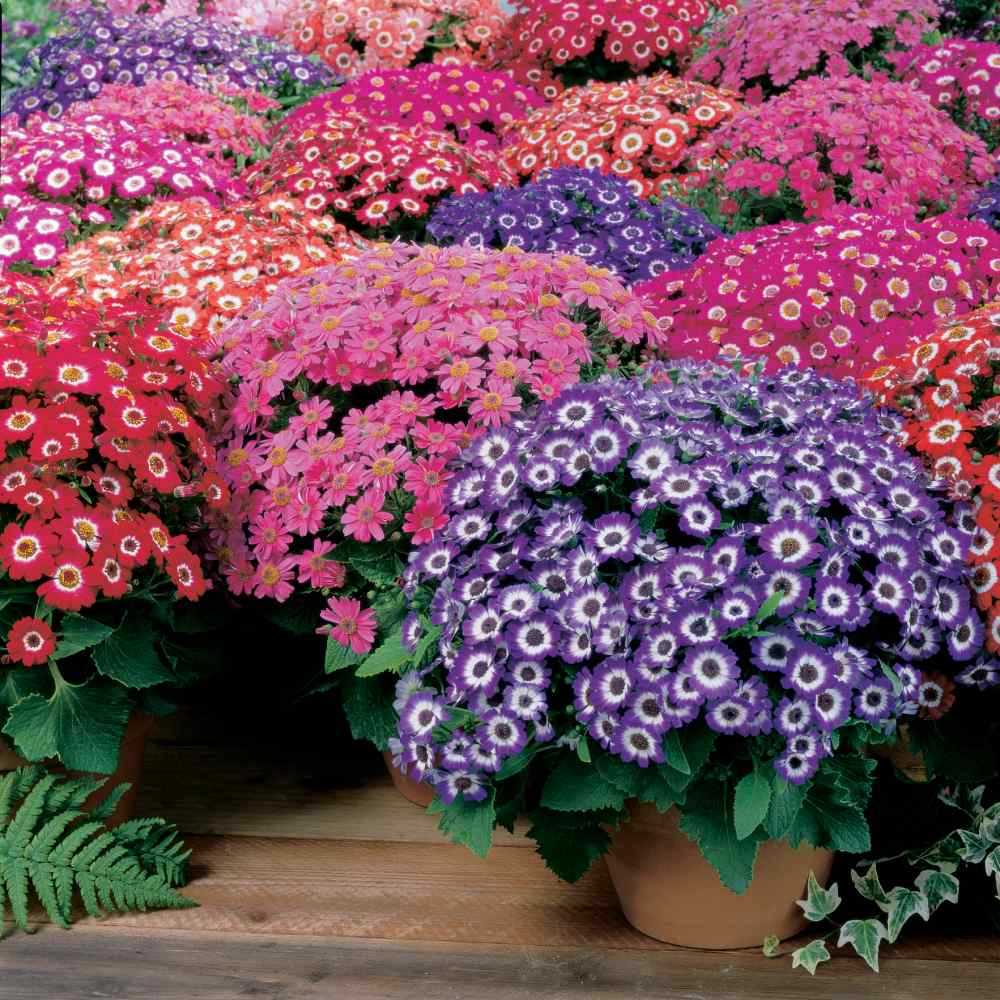
Cineraria, also known as Pericallis, is a beautiful flowering plant that is popular for its vibrant colors and ability to thrive in the garden. With its delicate petals and unique shape, the cineraria is a favorite among gardeners looking to add a touch of elegance to their outdoor space.
Growing cineraria from seed is a rewarding experience that allows you to have complete control over the plant’s growth and development. Whether you are a seasoned gardener or just starting out, these tips will help you successfully grow cineraria from seed in your garden.
Firstly, it is important to choose high-quality seeds that are fresh and viable. Look for seeds that are firm, with no signs of damage or decay. It is also recommended to purchase seeds from a reputable supplier to ensure you are getting the best possible quality.
Next, prepare a well-draining soil mixture for your cineraria seeds. Cineraria prefers a slightly acidic soil with good drainage. Mix equal parts of peat moss, perlite, and vermiculite to create a light and airy growing medium. This will provide the ideal conditions for the seeds to germinate and grow.
Once your soil mixture is ready, fill a seed tray or small pots with the soil and moisten it slightly. Sprinkle the cineraria seeds on top of the soil, making sure to space them out evenly. Gently press the seeds into the soil, but do not bury them too deep as they need light to germinate.
Place the seed tray or pots in a warm and bright location, such as a sunny windowsill. Cineraria seeds require a temperature of around 70-75 degrees Fahrenheit (21-24 degrees Celsius) to germinate. Keep the soil consistently moist but not waterlogged, as excess moisture can cause the seeds to rot.
Within 1-2 weeks, you should start to see the cineraria seeds germinate and tiny seedlings emerge. At this stage, make sure to provide them with plenty of light to promote healthy growth. You can also consider using a diluted liquid fertilizer to give them an extra boost.
As the seedlings grow, you can transplant them into larger pots or directly into the garden once the danger of frost has passed. Make sure to space them out properly to allow for proper air circulation and prevent overcrowding.
With regular care and attention, your cineraria plants will soon reward you with their beautiful blooms. Remember to deadhead the flowers and remove any dead or damaged leaves to promote continuous blooming throughout the season. Enjoy the vibrant colors and delicate beauty of your own cineraria garden!
Tips for Growing Cineraria from Seed in the Garden
Cineraria is a beautiful flowering plant that is commonly grown from seed in the garden. With its vibrant colors and delicate flowers, it adds a touch of beauty to any garden. Here are some tips to help you successfully grow cineraria from seed:
1. Choose the Right Location
Cineraria prefers a location that receives partial shade or dappled sunlight. It is important to avoid exposing the plant to direct sunlight, as it can scorch the leaves and flowers.
2. Prepare the Soil
Cineraria thrives in well-drained soil that is rich in organic matter. Prior to planting the seeds, prepare the soil by loosening it with a garden fork and adding compost or aged manure.
3. Sow the Seeds
Sow the cineraria seeds directly in the garden bed, spacing them about 6 inches apart. Sprinkle a thin layer of soil over the seeds and gently press them into the soil.
4. Water Regularly
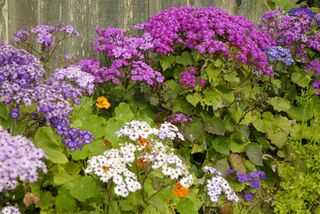

Keep the soil consistently moist but not overly wet. Water the cineraria plants regularly, particularly during periods of dry weather. Avoid overwatering, as this can lead to root rot.
5. Provide Some Protection
Cineraria can be susceptible to pests such as aphids and slugs. To protect your plants, consider using organic pest control methods such as companion planting or applying neem oil.
6. Pinch Back the Plants
To encourage bushier growth and more blooms, pinch back the tips of the cineraria plants when they reach about 4 inches in height. This will promote branching and result in a fuller plant.
7. Deadhead Spent Flowers


Regularly deadhead the spent flowers to promote continuous blooming. This will also prevent the plant from diverting energy into seed production.
8. Fertilize Occasionally
Apply a balanced, slow-release fertilizer to the cineraria plants every 4-6 weeks during the growing season. This will provide them with the necessary nutrients for healthy growth and vibrant blooms.
9. Mulch the Soil
Apply a layer of organic mulch around the cineraria plants to help conserve moisture, suppress weeds, and improve soil fertility. Avoid mulching directly against the stems to prevent rotting.
10. Enjoy the Beauty
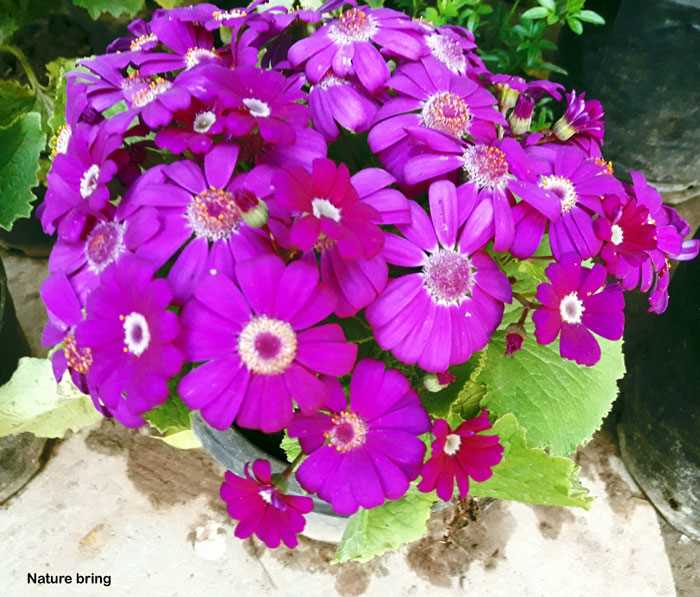

Once your cineraria plants start to bloom, sit back and enjoy their beauty. The vibrant colors and delicate flowers will add a cheerful touch to your garden.
By following these tips, you can successfully grow cineraria from seed in your garden and enjoy its beauty throughout the growing season.
Choosing the Right Location
When selecting a location for your cineraria plants, it is important to consider their natural habitat and preferred growing conditions. Cineraria plants thrive in cool and partially shaded areas, so it is best to choose a location that receives filtered sunlight or partial shade for most of the day.
Cineraria plants also prefer well-drained soil that is rich in organic matter. Before planting, make sure to amend the soil with compost or well-rotted manure to improve drainage and fertility.
It is important to avoid planting cineraria in areas with high heat and humidity, as this can lead to disease and poor growth. Additionally, avoid planting them in areas with strong winds, as the delicate foliage can easily get damaged.
If you are growing cineraria in pots or containers, make sure to place them in a location where they will receive the appropriate amount of light and protection from the elements.
By choosing the right location for your cineraria plants, you can ensure that they will thrive and produce beautiful blooms.
Preparing the Soil
Before planting cineraria seeds in your garden, it is important to prepare the soil properly. Here are some tips to help you get started:
- Choose a sunny location for your cineraria plants. They thrive in full sun, so find a spot in your garden that receives at least 6 hours of direct sunlight per day.
- Make sure the soil is well-draining. Cineraria plants do not like wet feet, so if you have heavy clay soil, consider amending it with organic matter such as compost or well-rotted manure to improve drainage.
- Remove any weeds or grass from the planting area. These unwanted plants can compete with cineraria for nutrients and water, so it’s important to clear them out before planting.
- Loosen the soil with a garden fork or tiller. This will help improve aeration and allow the cineraria roots to penetrate the soil more easily.
- Consider adding a balanced fertilizer to the soil before planting. Cineraria plants are heavy feeders and will benefit from the extra nutrients. Follow the manufacturer’s instructions for application rates.
- Once the soil is prepared, water it thoroughly to ensure good moisture penetration.
In summary, preparing the soil properly is essential for the successful growth of cineraria from seeds in your garden. By choosing a sunny location, improving soil drainage, removing weeds, loosening the soil, adding fertilizer, and ensuring good moisture levels, you can create an ideal growing environment for your cineraria plants.
Sowing the Seeds
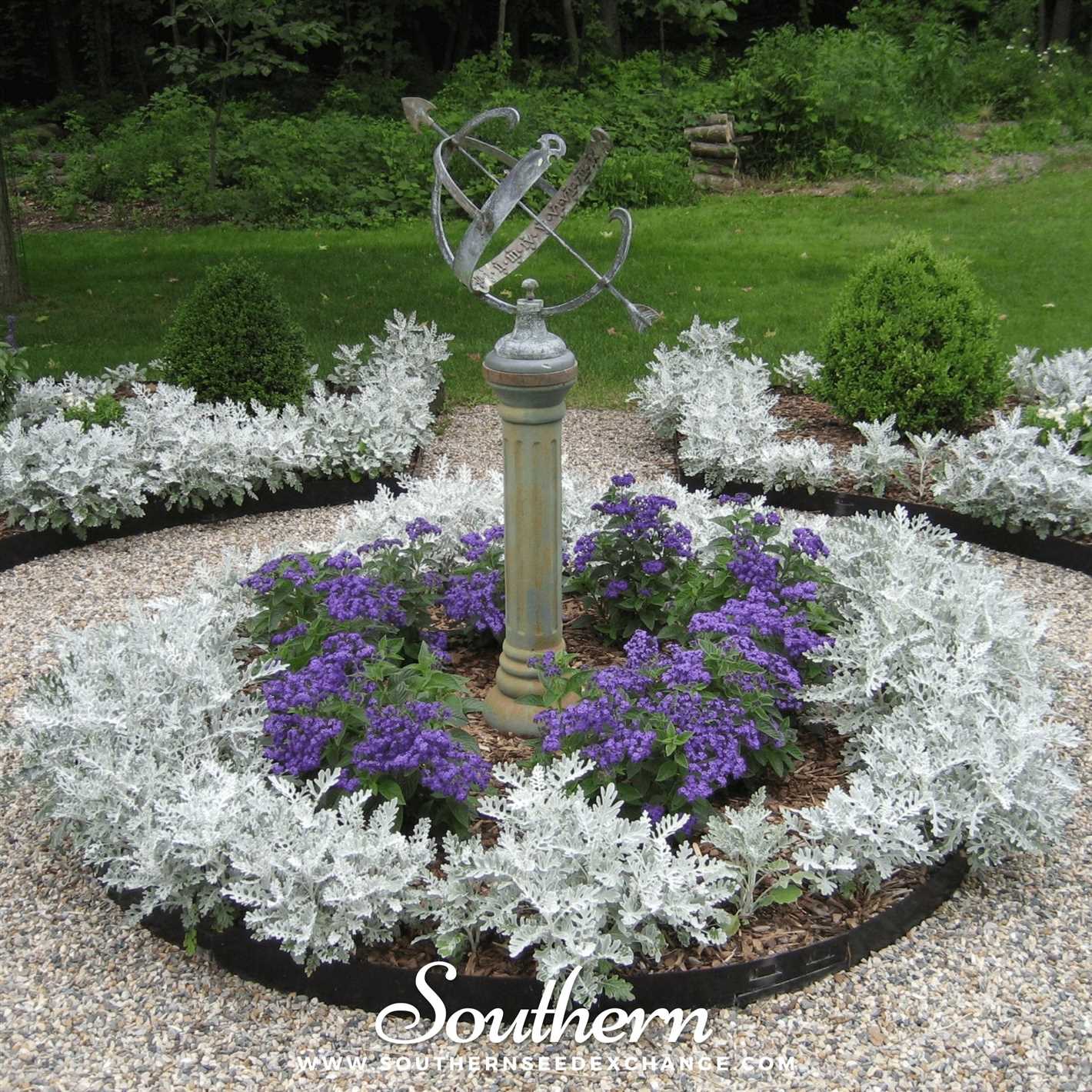

When sowing cineraria seeds, it’s important to start with high-quality seeds that are fresh and free from disease. You can purchase cineraria seeds from a reputable garden center or online seed supplier.
Before sowing the seeds, prepare a well-draining soil mix. Cineraria prefers loose and well-draining soil. You can create a soil mix by combining equal parts of compost, perlite, and peat moss.
Fill a seed tray or a shallow container with the soil mix. Moisten the soil lightly, ensuring it is not waterlogged.
Next, scatter the cineraria seeds evenly over the soil surface. Make sure the seeds are not too close together to allow room for growth.
Lightly press the seeds into the soil with your fingertips or a gentle press to ensure good contact with the soil. However, avoid burying the seeds too deeply as they need light to germinate.
Cover the seeds with a thin layer of vermiculite, which will help retain moisture and provide a suitable environment for germination.
Place the seed tray or container in a warm and well-lit area, but avoid direct sunlight as it may be too intense for the delicate seedlings.
Keep the soil moist by watering gently with a spray bottle or a fine mist setting on a watering can. It’s important to avoid overwatering as excess moisture can lead to rotting.
Germination usually takes around 7 to 14 days, depending on the variety. Once the seeds have germinated, remove the cover and continue to provide adequate light and moisture.
After the seedlings have developed their first true leaves, they can be transferred to individual pots or a larger container to allow for further growth.
Remember to harden off the seedlings before transplanting them into the garden. This involves gradually acclimating them to outdoor conditions by exposing them to increasing amounts of sunlight and outdoor temperatures over a period of several days.
By following these simple steps, you can successfully sow cineraria seeds and enjoy their beautiful blooms in your garden.
Providing Adequate Watering
Adequate watering is crucial for the successful growth of cineraria plants. These plants have shallow roots and can quickly dry out, so they need consistent moisture to thrive. Here are some tips for providing adequate watering:
- Watering Frequency: Cineraria plants should be watered regularly, especially during dry periods. Aim to water them once or twice a week, depending on how quickly the soil dries out.
- Deep Watering: When watering cineraria, make sure to provide deep irrigation. Water should penetrate the soil and reach the roots. Shallow watering can lead to weak root development and shallow roots.
- Watering Time: It is best to water cineraria plants in the early morning or late afternoon. This allows the leaves to dry before nightfall, reducing the risk of diseases caused by excess moisture.
- Watering Method: Avoid overhead watering, as it can lead to foliar diseases. Instead, use a drip irrigation system or water directly at the base of the plants.
- Soil Moisture: Regularly check the moisture level of the soil by sticking your finger into the soil. If it feels dry up to your knuckle, it’s time to water the plants.
By following these watering tips, you can ensure that your cineraria plants receive the right amount of moisture for healthy growth and vibrant blooms.
Managing Light and Temperature
Cineraria plants thrive in bright, indirect light. When growing them from seed, it is important to provide them with the right amount of light. Too little light can result in leggy, weak plants, while too much direct sunlight can scorch the leaves.
If you are growing cineraria indoors, place the pots near a south-facing window where they can receive bright, indirect light for most of the day. If you don’t have a suitable window, you can also use fluorescent grow lights to provide the necessary light for the plants.
When it comes to temperature, cineraria plants prefer a cool environment. The ideal temperature for germination is around 60-65°F (15-18°C). Once the seedlings have emerged, you can lower the temperature slightly to around 55-60°F (13-15°C) to encourage strong growth and prevent them from becoming leggy.
In warmer climates, it may be challenging to maintain the required cool temperatures. In such cases, you can try growing cineraria as a winter annual when temperatures are cooler. You can also use shade cloth or strategically place the plants where they can receive some shade during the hottest parts of the day.
It is important to monitor the temperature and light conditions regularly to ensure the health and proper growth of your cineraria plants. Minor adjustments to the environment can make a significant difference in their overall development.
Fertilizing for Healthy Growth
Fertilizing is an important aspect of growing cineraria plants from seed in the garden. Here are some tips to ensure healthy growth:
1. Choose the Right Fertilizer
Use a balanced fertilizer with equal amounts of nitrogen, phosphorus, and potassium (NPK). This will provide the necessary nutrients for the plants to grow and thrive.
2. Apply Fertilizer Regularly
Apply the fertilizer according to the package instructions. It’s important to fertilize regularly throughout the growing season to ensure continuous nutrient supply.
3. Avoid Overfertilization
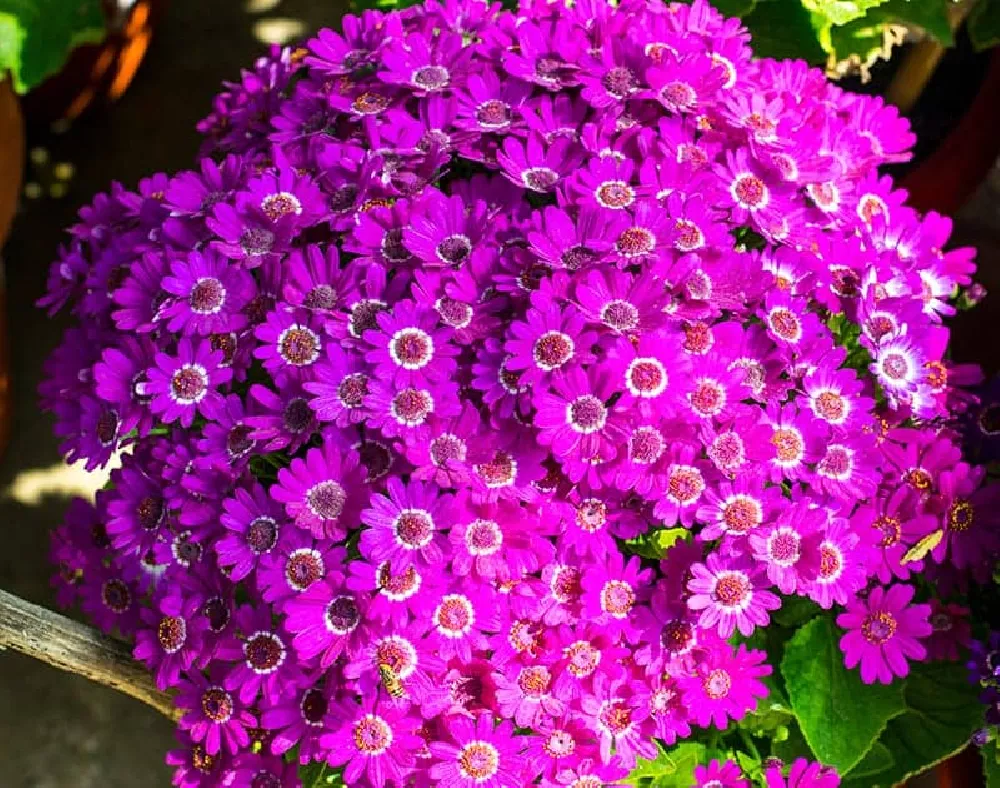

While regular fertilization is important, it’s equally important to avoid overfertilizing the cineraria plants. Excess fertilizer can burn the roots and damage the plants. Follow the recommended dosage and avoid applying fertilizer too frequently.
4. Water After Fertilizing
After applying the fertilizer, make sure to water the plants thoroughly. This will help to distribute the nutrients evenly and prevent any potential damage to the roots.
5. Use Organic Fertilizers
Consider using organic fertilizers, such as compost or well-rotted manure. These natural fertilizers not only provide nutrients but also improve the soil structure and promote soil health.
6. Monitor Plant Reaction
Observe how the cineraria plants react to the fertilization. If you notice any signs of nutrient deficiency or excess, adjust the fertilization accordingly. This could include yellowing or browning leaves, stunted growth, or wilting.
- Don’t fertilize during periods of extreme heat or drought. The plants may not be able to absorb the nutrients properly.
- Fertilize more frequently during periods of active growth, such as spring and early summer.
- Consider a slow-release fertilizer for a more controlled nutrient release over an extended period.
By following these fertilizing tips, you can promote healthy growth and beautiful blooms in your cineraria plants grown from seed in the garden.
Controlling Pests and Diseases
Cinerarias are susceptible to various pests and diseases that can affect their growth and overall health. However, with proper care and timely intervention, these issues can be effectively controlled. Here are some common pests and diseases that can affect cinerarias and how to deal with them:
Pests
- Aphids: These small insects can infest cineraria leaves, causing them to curl and distort. To control aphids, you can use insecticidal soap or neem oil. Alternatively, you can spray a mixture of water and dish soap directly on the affected plants to suffocate the aphids.
- Slugs and snails: These pests can leave slime trails on the foliage and feed on cineraria leaves. To control slugs and snails, you can handpick them or set up beer traps. Applying copper tape or diatomaceous earth around the base of the plants can also act as a barrier.
- Spider mites: Spider mites can cause leaves to turn yellow and develop a stippled appearance. Regularly spraying the foliage with water can help keep the spider mites at bay. If the infestation is severe, you can use insecticidal soap or neem oil.
Diseases
- Powdery mildew: This fungal disease appears as a white powdery substance on the leaves, stems, and flowers. To control powdery mildew, it is essential to ensure proper air circulation around the plants. Removing infected plant parts and applying fungicides can also help manage the disease.
- Botrytis blight: This fungal disease causes brown spots on the leaves and flowers, eventually leading to rotting. To control botrytis blight, it is crucial to avoid overhead watering and remove infected plant parts. Applying fungicides can also help prevent the spread of the disease.
- Root rot: Overwatering and poor drainage can lead to root rot in cinerarias. To prevent root rot, make sure to provide well-draining soil and avoid overwatering. If root rot occurs, it is essential to remove the affected plant and improve the growing conditions.
Regularly inspecting the cinerarias for any signs of pests or diseases is crucial for early intervention. Maintaining proper cultural practices, such as providing adequate sunlight, watering, and fertilization, can also help prevent pest and disease infestations. By taking proactive measures, you can ensure that your cinerarias thrive and remain healthy.
Harvesting and Storing Seeds
Harvesting seeds from your Cineraria plants is a simple process that allows you to save seeds for future planting. Here are some tips for harvesting and storing seeds:
- Timing: Wait until the flowers on your Cineraria have dried up and started to form seed heads. The seed heads should turn brown or grayish in color.
- Collection: Cut the seed heads from the plant using a sharp pair of scissors or shears. Place a container or bag underneath to collect any falling seeds.
- Drying: Lay the seed heads out in a dry, well-ventilated area. It is important to let the seeds dry completely before storing them to prevent mold or rot. This can take up to two weeks.
- Separation: Once the seed heads are dry, gently rub them between your hands to release the seeds. Remove any remaining plant material or debris.
- Storage: Store the seeds in a cool, dry place. You can use small envelopes, glass jars, or airtight containers to keep them safe from moisture and pests.
- Labeling: Don’t forget to label your seeds with the plant name and date of collection. This will help you keep track of your seed inventory and ensure that you use the oldest seeds first.
- Viability: Keep in mind that Cineraria seeds can remain viable for a few years if stored properly. However, it is always a good idea to test the seeds before planting them to ensure their germination rate.
By following these simple steps, you can successfully harvest and store seeds from your Cineraria plants, allowing you to enjoy their beautiful blooms year after year.
Questions and Answers:
How long does it take for cineraria seeds to germinate?
Cineraria seeds usually take about 10 to 14 days to germinate.
Can cineraria be grown in containers?
Yes, cineraria can be grown in containers as long as they have good drainage and are of sufficient size to accommodate the plant’s root system.
What is the ideal soil pH for growing cineraria?
The ideal soil pH for growing cineraria is around 6.0 to 7.0.
Should cineraria seeds be sown indoors or directly in the garden?
Cineraria seeds can be sown indoors in late winter or early spring, or directly in the garden after the last frost date.
What are some common problems that can occur when growing cineraria from seed?
Some common problems that can occur when growing cineraria from seed include poor germination, damping off disease, and attacks from pests like aphids or whiteflies.
Are there any special care instructions for cineraria plants?
Cineraria plants require regular watering, well-drained soil, and protection from extreme temperatures. They also benefit from regular fertilization and deadheading of spent flowers to encourage continuous blooms.
Can cineraria be grown in full sun?
Cineraria prefers partial shade to full sun, but it can tolerate some afternoon sun as long as it is provided with sufficient moisture.







